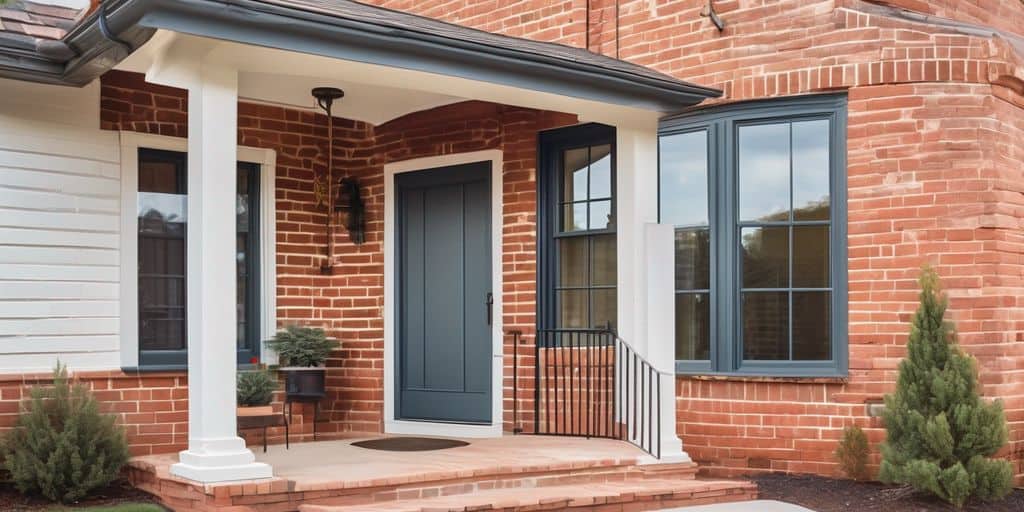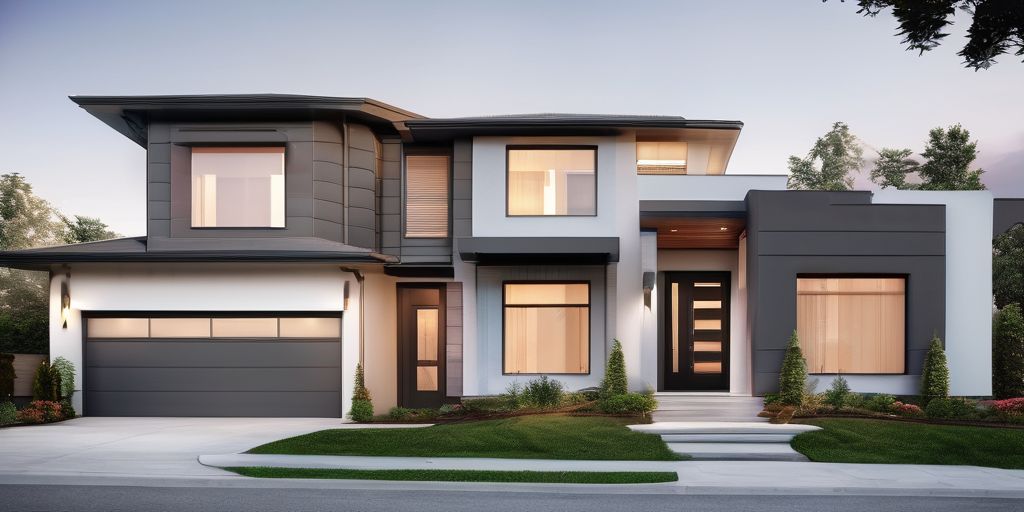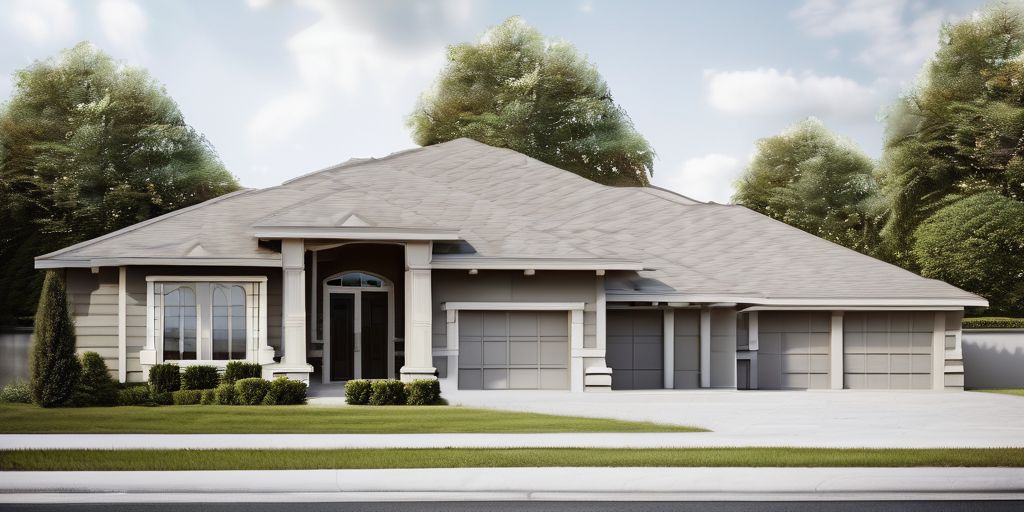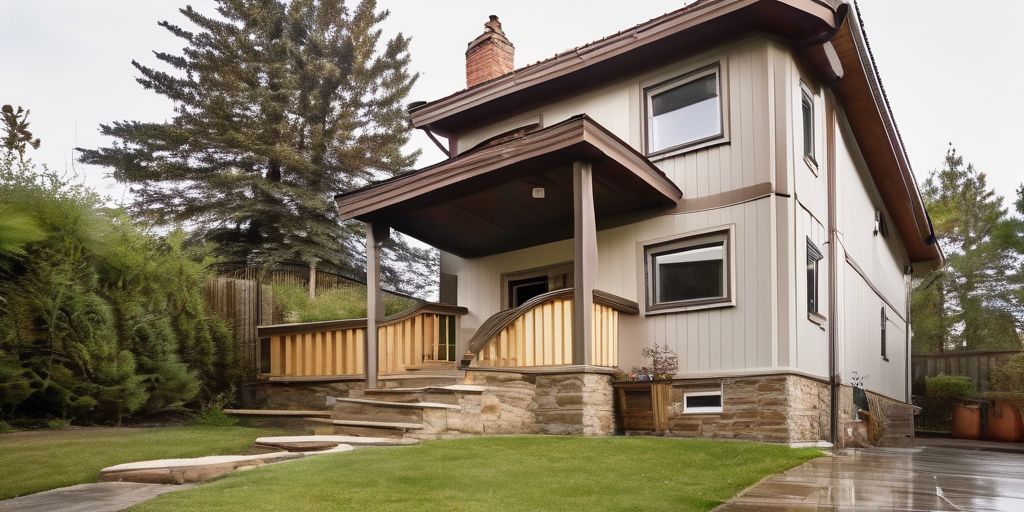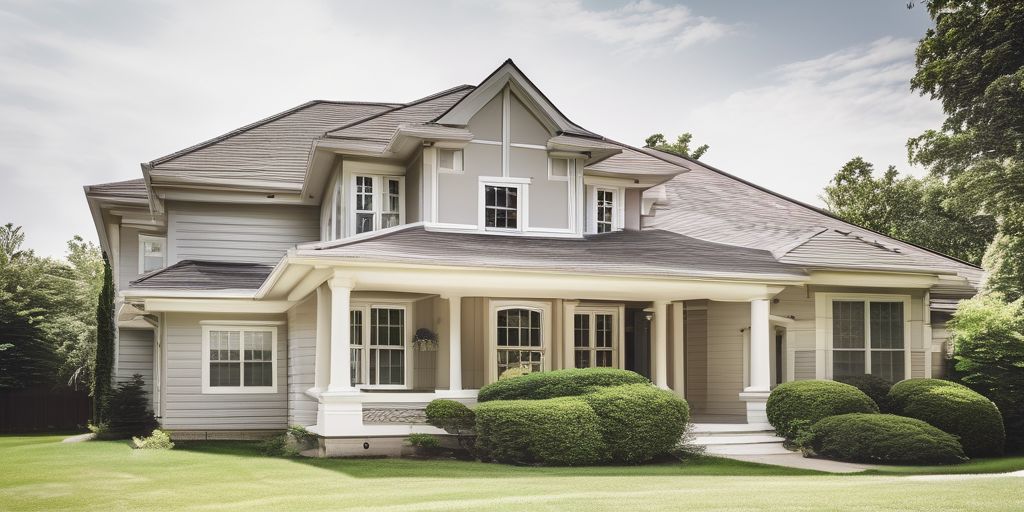Hamilton has a rich mix of old and new architectural styles. Painting brick homes here means thinking about these styles. This guide will help you pick the best painting methods, colors, and tips for keeping your brick looking great.
Key Takeaways
- Hamilton’s architecture is a blend of historical and modern styles, which affects how you should paint brick homes.
- Different painting techniques have their own pros and cons, so choose the one that fits your needs best.
- Picking the right colors can make your home stand out while blending in with the neighborhood.
- Proper preparation and application are key to a long-lasting paint job on brick surfaces.
- Regular maintenance helps keep your painted brick home looking fresh and protects it from weather damage.
Understanding Hamilton’s Unique Architectural Styles
Hamilton boasts a rich collection of architectural styles, making it a fascinating city for architecture enthusiasts. The city’s buildings range from historical to modern, each with its own unique charm. This blend of old and new creates a vibrant and diverse urban landscape.
Historical Influences on Brickwork
Hamilton’s historical architecture is heavily influenced by various styles, including Georgian, Victorian, and Edwardian. These styles are characterized by their intricate brickwork, large windows, and decorative trims. The Pigott Building and the Landed Banking and Loan Building are prime examples of this historical influence. These buildings showcase the craftsmanship and attention to detail that were prevalent in the past.
Modern Trends in Hamilton Architecture
In recent years, Hamilton has seen a surge in modern architectural designs. These contemporary structures often feature clean lines, large glass windows, and minimalist aesthetics. The contrast between these modern buildings and the historical ones adds a unique flavor to the city. Areas like Bay Street South are perfect examples of how modern architecture is being seamlessly integrated into the city’s landscape.
Blending Old and New in Brick Painting
One of the exciting aspects of Hamilton’s architecture is the blending of old and new styles, especially in brick painting. Homeowners and architects are finding innovative ways to update historical buildings while preserving their original charm. This often involves using modern paint techniques and colors that complement the traditional brickwork. The result is a harmonious blend that respects the past while embracing the future.
Hamilton’s architectural diversity is one of its greatest assets, offering a unique blend of historical and modern styles that make the city truly special.
Choosing the Right Brick Painting Technique
Pros and Cons of Different Methods
When it comes to painting brick, there are several methods to consider, each with its own advantages and disadvantages. Hand painting is a traditional approach that allows for detailed work and ensures the paint gets into all the nooks and crannies of the brick. However, it can be time-consuming and labor-intensive. On the other hand, spray painting is much faster and can cover large areas quickly, but it may not penetrate the brick’s texture as deeply. A combination of both methods, such as spray painting followed by back-rolling or back-brushing, can offer the best of both worlds.
Selecting the Best Paint for Brick
Choosing the right paint is crucial for a long-lasting finish. Look for paints specifically designed for masonry, as they are formulated to adhere to brick surfaces and withstand the elements. Acrylic latex paint is a popular choice due to its durability and ease of application. It’s also important to consider the finish; a matte finish can give a classic look, while a glossy finish can make a bold statement.
DIY vs. Professional Brick Painting
Deciding whether to tackle a brick painting project yourself or hire a professional depends on several factors. DIY painting can be cost-effective and satisfying, but it requires time, effort, and the right tools. Professionals bring expertise and efficiency, ensuring a high-quality finish. They are also well-versed in handling challenges like moisture issues and preparing the brick for long-lasting results. If you’re unsure, consulting with a professional can provide valuable insights and help you make an informed decision.
While some purists may argue that painting brick can obscure its natural beauty, the right color choice can actually enhance home aesthetics, especially when used to highlight architectural features or exterior brick accents.
Color Strategies for Hamilton Homes
Popular Color Palettes for Brick Exteriors
Choosing the right color palette for your brick exterior can make a significant difference in your home’s curb appeal. Here are some popular options:
- Classic Neutrals: Shades like beige, gray, and white offer a timeless look that blends well with various architectural styles.
- Earthy Tones: Colors such as terracotta, olive green, and brown can help your home harmonize with the natural landscape.
- Bold Accents: For a modern twist, consider using bold colors like navy blue or deep red as accents against a neutral base.
Using High-Contrast Trim Effectively
High-contrast trim can add a striking visual element to your home’s exterior. Here are some tips:
- Black and White: A classic combination that offers a clean, sophisticated look.
- Complementary Colors: Choose trim colors that complement the main color of your brick. For example, a light gray house with dark blue trim.
- Placement: Use high-contrast trim on windows, doors, and eaves to draw attention to architectural details.
Incorporating Natural Tones and Textures
Incorporating natural tones and textures can create a cohesive and inviting look for your home. Consider these strategies:
- Wood Elements: Adding wooden shutters or doors can bring warmth and texture to your brick exterior.
- Stone Accents: Use stone for pathways, steps, or even as part of the facade to add a rustic charm.
- Greenery: Planting trees, shrubs, and flowers around your home can enhance the natural feel and blend the structure with its surroundings.
Tip: When selecting exterior brick paint in Hamilton, consider the weather conditions and how the color will look in different lighting throughout the day.
By thoughtfully choosing your color palette and incorporating natural elements, you can create a beautiful and harmonious exterior for your Hamilton home.
Preparation and Application Tips
Cleaning and Repairing Brick Surfaces
Before you start painting, it’s crucial to clean and repair the brick surfaces. Proper preparation is key to ensuring that the paint adheres well and lasts long. This includes:
- Power Washing: Removes dirt, mildew, and loose paint debris.
- Scraping & Sanding: Essential for creating a smooth surface for proper paint adhesion.
- Repairs: Addressing everything from minor wood filling to replacing rotten sections for structural integrity.
- Priming: This may be needed on bare surfaces, after repairs, or to cover stubborn stains.
Essential Tools and Materials
Having the right tools and materials can make a big difference in the quality of your paint job. Here’s a list of essentials:
- Paint sprayers and brushes
- High-quality exterior paint and primer
- Drop cloths and masking tape
- Scrapers and sanders
- Caulk and spackle for repairs
Step-by-Step Painting Guide
- Clean the Surface: Start with a thorough cleaning to remove any dirt or debris.
- Make Repairs: Fill in any cracks or holes with caulk or spackle.
- Apply Primer: A coat of primer helps the paint adhere better and last longer.
- Mask Surrounding Areas: Use drop cloths and masking tape to protect areas you don’t want painted.
- Apply the Paint: Use a paint sprayer for large areas and brushes for detailed work.
- Back-Roll or Back-Brush: This helps the paint penetrate the brick’s texture for a stronger bond.
- Apply a Second Coat: Ensure even coverage and maximum protection.
Finding the balance between aesthetics and durability in brick painting in Hamilton involves blending modern looks with historical integrity, choosing popular color palettes, and using techniques for a professional finish.
By following these steps, you can achieve a professional-looking paint job that enhances the beauty and durability of your brick exterior.
Maintaining Your Painted Brick Exterior
Regular Cleaning and Upkeep
Routine maintenance is key for keeping your painted brick exterior looking vibrant. Regular cleaning helps remove dirt and grime that can dull the paint. Use a gentle wash with mild soap and water to avoid damaging the paint. For minor dirt and dust, you can skip the cleaning step and proceed with other maintenance tasks.
Handling Weather-Related Wear and Tear
Hamilton’s weather can be tough on painted brick. Inspect your brickwork regularly for signs of damage or wear, such as chipping paint, cracks, or moisture issues. Prompt touch-ups can prevent small problems from becoming big ones. Weighing the pros and cons of outdoor brick painting in Hamilton involves considering factors like climate, sun exposure, and paint selection for aesthetic appeal and protection against weather conditions.
When to Repaint or Touch Up
Knowing when to repaint or touch up your brick exterior is crucial. Look for signs like fading color, peeling paint, or exposed brick. If you notice these issues, it’s time to repaint. Regular upkeep, including gentle cleaning and touch-ups, will preserve the aesthetic appeal and structural integrity of your painted brick home. Proactive care minimizes the need for extensive repairs and keeps your home looking fresh and vibrant.
Remember, the key to a lasting finish is not just the initial application but the ongoing attention to detail and care you provide to your home’s exterior.
Case Studies of Brick Painting in Hamilton
Adapting brick painting techniques for Hamilton’s architectural styles requires understanding historical context, contemporary aesthetics, and preserving architectural integrity. Here are some success stories:
- Historical Homes: Many older homes in Hamilton have been revitalized with careful brick painting that respects their original charm.
- Modern Residences: Newer homes have embraced bold colors and sleek finishes, blending modern trends with traditional brickwork.
- Mixed-Use Buildings: Combining residential and commercial spaces, these buildings showcase innovative brick painting techniques that cater to diverse needs.
Balancing historical charm with modern aesthetics for successful projects can be tricky. Here are some common challenges and their solutions:
- Weather Conditions: Hamilton’s weather can be unpredictable. Using weather-resistant paints and proper sealing techniques can help.
- Mortar Types: The impact of mortar types on brick painting in Hamilton is significant. Choosing the right type ensures longevity and aesthetic appeal.
- Community Feedback: Engaging with the community to understand their preferences and concerns can lead to more successful projects.
Evaluating sheen options for painted brick homes in Hamilton is crucial. Experts recommend:
- Matte Finishes: Ideal for a classic look, matte finishes hide imperfections and offer a timeless appeal.
- Satin Finishes: These provide a slight sheen, balancing durability and aesthetic appeal.
- Glossy Finishes: Best for modern homes, glossy finishes are easy to clean and maintain.
Pro Tip: Always test a small area before committing to a sheen to see how it looks in different lighting conditions.
By considering these insights, homeowners can make informed decisions that enhance both the beauty and value of their properties.
The Environmental Impact of Brick Painting
Brick painting can have a significant environmental impact, and it’s important to consider eco-friendly options and sustainable practices. Here are some key points to keep in mind:
Eco-Friendly Paint Options
Choosing the right paint is crucial for minimizing environmental harm. Look for paints that are:
- Low in volatile organic compounds (VOCs): These paints release fewer harmful chemicals into the air.
- Biodegradable: Opt for paints that break down naturally without harming the environment.
- Water-based: These are generally less toxic and easier to clean up than oil-based paints.
Sustainable Painting Practices
Adopting sustainable practices can further reduce the environmental impact of brick painting. Consider the following:
- Proper disposal of paint and materials: Ensure that leftover paint and materials are disposed of correctly to avoid contaminating soil and water.
- Reuse and recycle: Use recycled materials whenever possible and recycle any waste generated during the painting process.
- Energy-efficient tools: Use tools that consume less energy to reduce your overall carbon footprint.
Long-Term Benefits of Painted Brick
While the initial environmental impact of painting brick can be a concern, there are long-term benefits that can offset these effects:
- Increased durability: Painted brick can be more resistant to weather-related wear and tear, reducing the need for frequent repairs and replacements.
- Improved insulation: Certain types of paint can enhance the insulating properties of brick, leading to lower energy consumption for heating and cooling.
- Aesthetic longevity: A well-maintained painted brick exterior can last for many years, reducing the need for additional resources to maintain its appearance.
While some may argue that painting brick can obscure its natural beauty, the right color choice can actually enhance home aesthetics, especially when used to highlight architectural features or exterior brick accents.
By considering these factors, you can make more environmentally responsible choices when painting your brick exterior.
Painting bricks can change the look of your home, but it also has effects on the environment. The paint can release harmful chemicals into the air and soil. If you’re thinking about painting your bricks, it’s important to know the impact it can have. For more information and eco-friendly options, visit our website.
Conclusion
In wrapping up, painting brick homes in Hamilton is a fantastic way to blend the city’s rich architectural history with modern design trends. Whether you choose to highlight the natural beauty of the brick or opt for a fresh, vibrant color, the key is to select the right technique and materials. Remember, a well-painted brick exterior not only enhances curb appeal but also provides lasting protection against the elements. So, take your time, plan carefully, and enjoy the transformation of your home. Happy painting!
Frequently Asked Questions
What is the best type of paint to use on brick?
The best type of paint for brick is usually acrylic latex paint. It sticks well to brick surfaces and allows the brick to breathe.
How do I prepare my brick surface for painting?
First, clean the brick thoroughly using a power washer or a stiff brush. Make sure to repair any cracks and let the brick dry completely before painting.
Can I paint my brick house by myself?
Yes, you can paint your brick house by yourself. However, it requires a lot of preparation and the right tools. If you’re not confident, hiring a professional might be a better option.
How long does painted brick last?
Painted brick can last anywhere from 5 to 15 years, depending on the quality of the paint and how well it is maintained.
What are the benefits of painting brick?
Painting brick can give your home a fresh, modern look. It also provides a layer of protection against the weather and can help cover up any imperfections.
Is painting brick environmentally friendly?
It can be, especially if you use eco-friendly paints that have low or no VOCs (volatile organic compounds). These paints are better for the environment and for your health.

